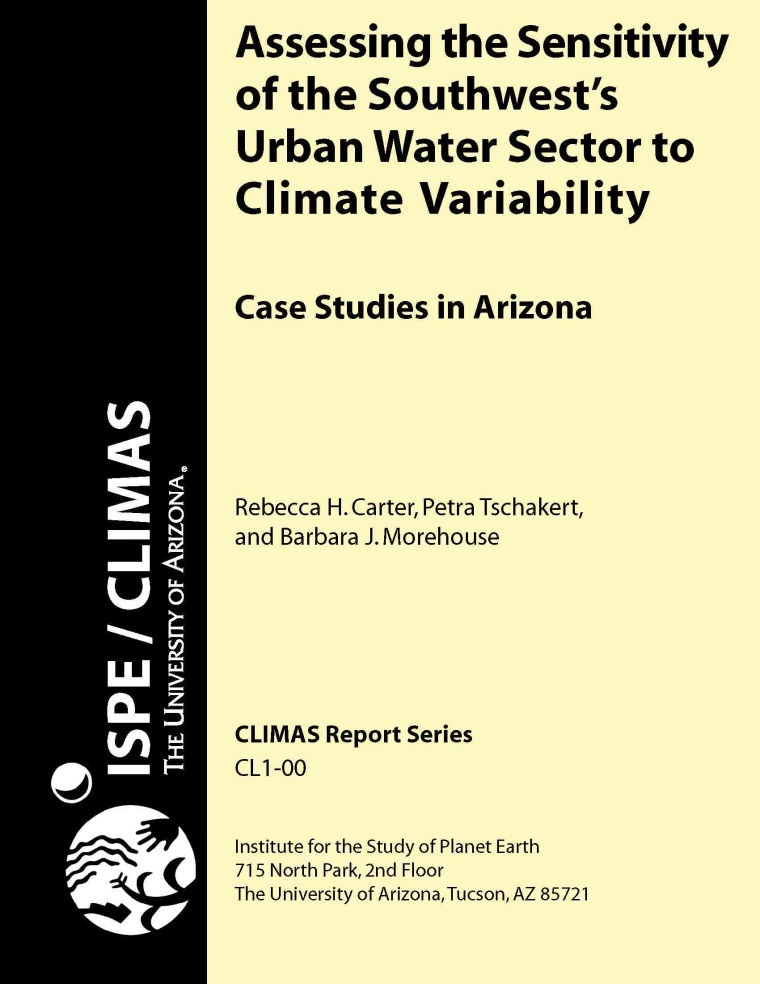The analysis presented in this working paper provides some parameters for thinking about the extent to which droughts of historically high magnitudes might affect water resource budgets in urban areas of Arizona. The analysis also reveals the high degree to which sensitivity to drought varies among the study sites. This variance among the study sites is largely due to local factors such as existing water use patterns, historical rainfall patterns, level of population growth expected, anticipated changes in water use among sectors over the next 25 years, and responsiveness of local water supplies to climatic conditions. Results indicate that the Santa Cruz AMA highly vulnerable even to short-term climatic variability. By contrast, the strongest impacts on the Tucson and Phoenix AMAs, and on the Sierra Vista subwatershed, are more apt to be experienced under longer-term conditions of deep drought. Sensitivity in the Benson subwatershed is the most sector-specific, with significant climatic impacts likely to occur in its agricultural sector. Although agriculture is a highly visible user of water resources, results of this analysis indicates the elimination of agriculture under conditions of deep drought cannot be expected tango fully counter imbalances between supply and demand. In most cases, stringent conservation measures would also be required. Sustained severe drought conditions could generate particularly acute dissent among competing water users in areas where valued riparian areas exist - notably the San Pedro National Conservation Area and the Santa Cruz River riparian area downstream from the Nogales International Wastewater Treatment Plant.
Assessing the Sensitivity of the Southwest’s Urban Water Sector to Climatic Variability
Reference
Carter, R., et al. Assessing the Sensitivity of the Southwest’s Urban Water Sector to Climatic Variability. no. CL1-00, 2000.
Abstract
Document


